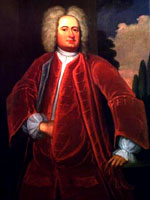Fort Pitt Museum [PA]
Situated in the recreated Monongahela Bastion at Point State Park, the Fort Pitt Museum commemorates the strategic importance of the Forks of the Ohio during the Great War for Empire in which British, French, Colonial, and Native American forces struggled for control of North America. Through exhibits and programs, the museum also addresses the important role of Fort Pitt during the American Revolution and the early development of the city of Pittsburgh. The site presents tours, exhibits, educational programs, and publications to broaden understanding of the significance of the area known as "the Point." In meeting this goal, Fort Pitt Museum closely examines the French and Indian War, the American Revolution, the various military fortifications established on the site, the many cultures that influenced the development of the region, and the importance of the fur trade and other early commerce.
The museum offers exhibits, tours, educational programs, and occasional recreational and educational events.

